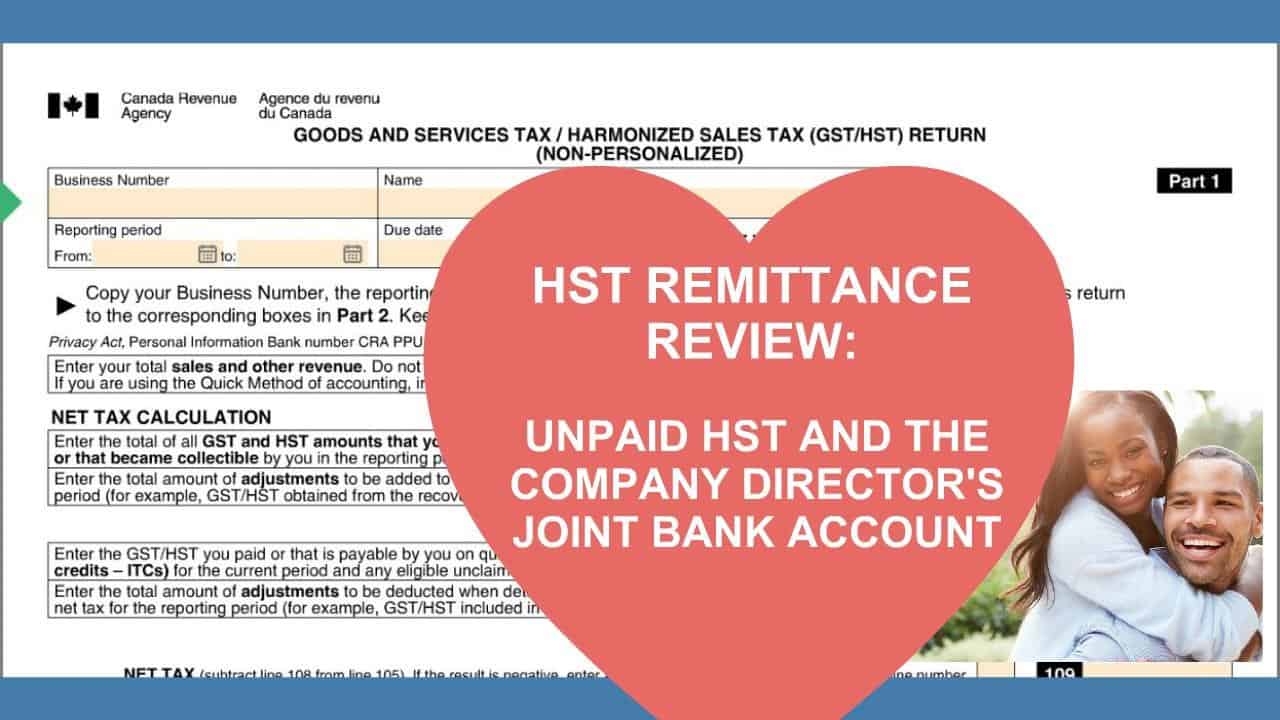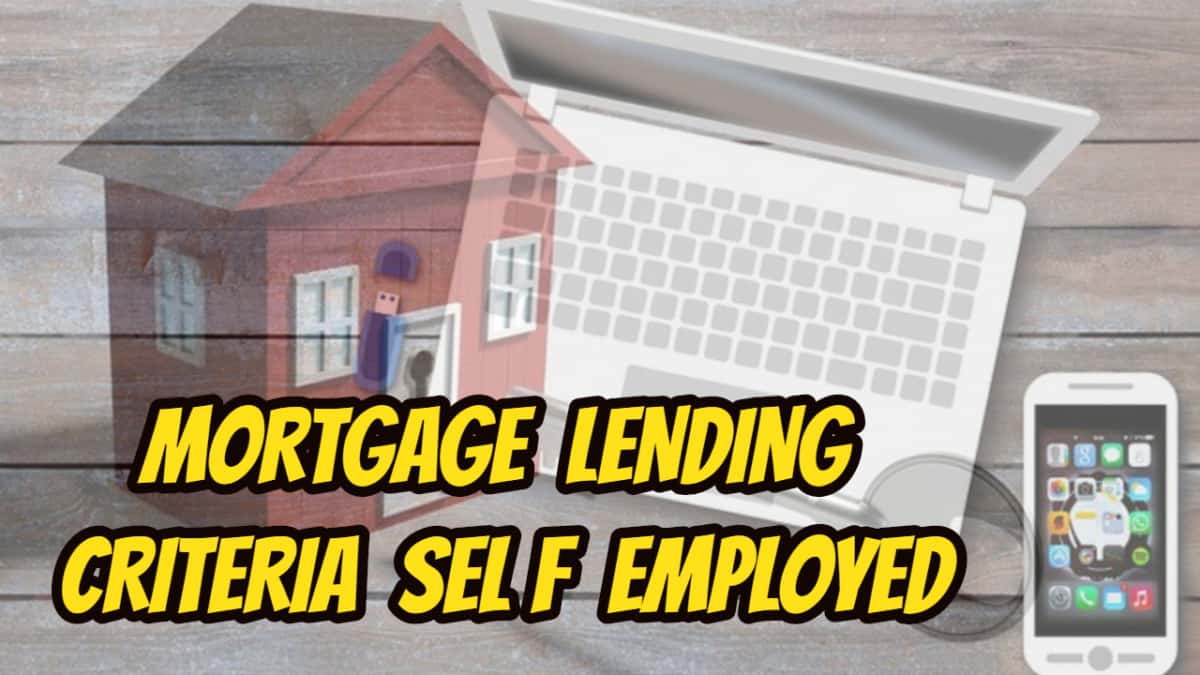Introduction
I have previously written about joint bank accounts and joint credit cards. I recently read a decision of the Tax Court of Canada that will be of interest to every entrepreneur whose company may be behind in their HST remittance and who has a joint bank account with their spouse.
Joint bank account considerations
Opening a joint bank account is a relatively easy procedure. People who share a joint savings or chequing account can each make deposits and withdrawals from the account without the signature of the person they share the account with. As a matter of fact, any person listed on the joint account can close it using proper identification. Data held by a bank on the owners of the joint account, similar to any other account, consists of personal identifiers of the holders of the account, which enables anyone legally authorized to get that information.
I have written before on the dangers of a joint bank account. The dangers have nothing to do with the bank per se. They are more non-bank related. Examples of problems include:
- Sometimes moms and dads will share an account with a small child. The reason is to begin providing the youngster with financial literacy education. However, if you share a bank account with your minor child and your spouse, you are taking a chance that your partner can access that joint bank account that you share with your child without your authorization.
- There is a threat with a joint account between partners when you have a saver as well as a spender who each has access to the account without the other’s signature. It can trigger family, relationships or business problems.
I wanted to give this brief background information, but it is not what is of most interest to entrepreneurs. The following Tax Court of Canada decision which I will now describe is.
Tammy White and Her Majesty The Queen facts
This judgement was rendered on February 4, 2020, in the Tax Court of Canada in Vancouver, BC. Ms. White appealed an assessment by Canada Revenue Agency (CRA) against her under subsection 160(1) of the Income Tax Act (R.S.C., 1985, c. 1 (5th Supp.)) (Income Tax Act) and subsection 325(1) of the Excise Tax Act (R.S.C., 1985, c. E-15) (Excise Tax Act). You will recall that last week, I spoke about the danger of receiving transfers of property from someone who owes money to CRA in my blog, DO YOU INHERIT DEBT IN CANADA: CRA SAYS YES TO PROPERTY TRANSFERS. That blog dealt with debt in death and the deceased Estate. This week, nobody died. You are probably wondering what this has to do with entrepreneurs and joint bank accounts. I will now tie it all together. I promise!
The appeal deals with the concern of whether the deposit of funds by a person into a joint account held with the entrepreneur’s partner comprises a transfer of property under subsection 160(1) of the Income Tax Act and subsection 325(1) of the Excise Tax Act.
The facts of the case are as follows:
- On March 1, 2016, Mrs. White was assessed $49,962.45 under section 160 of the Income Tax Act and $90,886.35 under section 325 of the Excise Tax Act. She appealed both assessments to the Court. The assessments are a result of amounts that her husband, former business owner Andy White, apparently moved to his wife between March 15, 2013, and October 30, 2015.
- On March 26, 2014, Andy filed a consumer proposal under the Bankruptcy and Insolvency Act (R.S.C., 1985, c. B-3) (BIA).
- Department of Justice counsel on behalf of CRA at the hearing backed off part of the claim by agreeing that any kind of purported transfers made after the date of the consumer proposal is beyond the range of the assessments in concern in this appeal.
- Tammy and Andy were married in 1984 and always held the same joint bank account.
- For the last 35 years, Andy and Tammy have made use of the joint bank account to pay their personal expenditures and the costs of running their family household.
- Andy was a part-owner of White & Davidson Logging Limited, a company he started working for from a very young age.
- The company began to experience financial troubles in 2004 as a result of weak demand in the British Columbia forestry industry and also a government-mandated decrease in cutting rights. These troubles resulted in the business selling its assets in 2006 and discontinuing business. At the time the business stopped operating, it had not remitted all amounts it had held back as payroll source deductions. It also did not make the required payment of the amounts it owed as HST tax obligations. Accordingly, it was not current in its tax obligations and did not make its final payroll or HST remittance.
- Andy was a Director of the defunct company and therefore was assessed by CRA personally for the company’s unremitted payroll source deductions and unpaid HST.
- After a while, and after being assessed by CRA, Andy eventually found full-time employment and deposited his pay into the joint bank account he shared with Tammy.
- Andy owed CRA almost $91,000 for the company’s unremitted HST.
- Tammy was also employed in a retail store. In the late 1990s, she opened up a bank account only in her name. Her pay was deposited into that new account.
- Tammy was the sole owner of the family’s home. She admitted under oath that she made payments out of the joint account to pay the mortgage, utilities, property taxes and any other costs of running the home.
- Certain amounts were also transferred from the joint account into Tammy’s personal account.
The issues
The issues are fairly narrow. In last week’s blog, I went through the criteria a court must look at to determine if there was a transfer of property at a time when the transferor owed an amount to CRA. You can refresh yourself on the criteria by clicking here.
CRA’s position was that a transfer of property from Andy to Tammy took place the moment his pay was deposited into the joint bank account. They also stated that Tammy gave no consideration for this.
Tammy’s position was that no transfer could have taken place by merely depositing the funds into the joint bank account. Andy maintained full control of the money. CRA, or the Sheriff, acting on a valid judgement, could garnishee Andy’s share of the funds in the joint bank account.
At the time in question, Andy’s pay that was deposited into the joint bank account totalled $89,806.72.
The Court’s decision
The court did not agree with CRA. The Judge found that:
- Just depositing the funds in a joint account does not comprise a transfer. Mr. White did not unload himself of the funds when they were deposited into the joint account. He continued to have complete access to the funds in the account. As a matter of fact, the evidence was that Andy, as he had done since 1984, used some of the funds to pay his personal expenses and specific costs of his household.
- Andy did not defeat or whatsoever prevent the Minister of Revenue from collecting any tax he owed by placing his compensation in the joint account. CRA could have taken collection activity relative to funds in the joint account. In fact, part of the evidence before the court was that the joint bank account was garnished by a third party to repay one of Andy’s debts.
- As soon as the funds were put in the joint bank account, Tammy had the ability to impact a transfer. Nonetheless, such transfer did not happen until the funds were removed from the joint account and placed into the account only in Tammy’s name.
- The Judge was very critical of CRA. They did not properly identify funds taken out of the joint account and put into Tammy’s account. There was limited evidence before the court. So, the Judge had to “guesstimate” as best as possible from the scant evidence how much was transferred from the time Tammy opened up her sole account and the date of Andy filing a consumer proposal.
- The Judge determined that the amount of property Andy transferred to Tammy during the relevant period for no consideration was the amount of $34,052.
- Accordingly, the Judge allowed the appeal and vacated the assessment. He referred it back to the Minister of Revenue to reconsider a reassessment of Tammy in the amount of $34,052.
HST remittance and the entrepreneur
So what does this mean for the entrepreneur? It tells me that if you are:
- Director of an insolvent company that owes unremitted source deductions or unpaid HST;
- the company goes either into receivership or bankruptcy or otherwise has to shutdown;
- you are assessed personally by CRA because you were the Director; and
- you get another job and deposit your pay into a joint bank account you hold with a spouse or child.
Your spouse or child will not be liable under the property transfer laws of the Income Tax Act and/or the Excise Tax Act by the mere depositing of your money into the joint bank account. What it also tells me is, if you are in this situation and do not have a joint bank account, maybe you should! If so, go back to the “Joint bank account considerations” section of this blog to see if it is the right thing for you to do in your situation.
Summary
I hope you enjoyed this blog on HST remittance and joint bank accounts. The Ira Smith Team is available to help you at any time. We offer sound advice and a solid plan for Starting Over Starting Now so that you’ll be well on your way to a debt-free life in no time.
Do you or your company have too much debt? If yes, then you need immediate help. The Ira Smith Team comprehends just how to do a debt restructuring. Much more notably, we know the demands of the business owner or the person who has too much debt. Due to the fact that you are managing these stressful financial problems, you are anxious.
It is not your fault you cannot fix this issue on your own. You have just been shown the old ways. The old ways do not work anymore. The Ira Smith Team makes use of new contemporary ways to get you out of your debt troubles while avoiding bankruptcy. We can get you debt relief now.
At Ira Smith Trustee & Receiver Inc., we take a look at your whole condition and layout a strategy that is as unique as you are. We take the load off of your shoulders as a part of the debt negotiation approach we will create just for you.
We understand that individuals facing financial troubles require a lifeline. That is why we can establish a restructuring procedure for you as well as end the pain you feel.
Call us now for a no-cost consultation. We will certainly get you or your business back on the road to a well balanced and healthy life and end the pain factors in your life, Starting Over, Starting Now.




